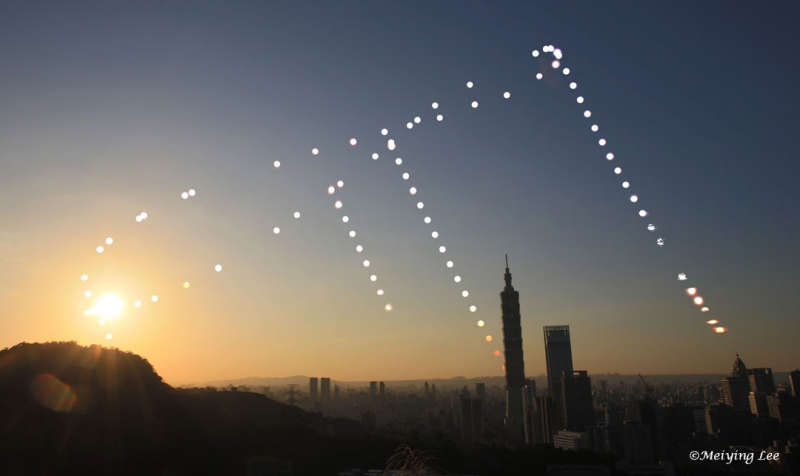
|
Credit & Copyright: Meiying Lee
Explanation:
Does the Sun return to the same spot on the sky every day? No.
A better and more visual answer to that question is an
analemma,
a composite of images taken at the
same time
and from the same place over the course of a year.
The featured analemma
was compiled at 4:30 pm many afternoons from
Taiwan during 2021, with the city
skyline of
Taipei in the foreground, including tall
Taipei 101.
The Sun's location in December -- at the
December solstice -- is shown on the far left,
while its location at the
June
solstice is captured on the far right.
Also shown are the positions of the Sun throughout the rest of the day on the
solstices and
equinoxes.
Today is the
June solstice of 2022, the day in
Earth's northern hemisphere when the
Sun
spends the
longest time in the sky.
In many countries, today marks the official beginning of a new
season,
for example winter in Earth's southern hemisphere.
|
January February March April May June July August September October November December |
| ||||||||||||||||||||||||||||||||||||||||||||||||
NASA Web Site Statements, Warnings, and Disclaimers
NASA Official: Jay Norris. Specific rights apply.
A service of: LHEA at NASA / GSFC
& Michigan Tech. U.
Based on Astronomy Picture
Of the Day
Publications with keywords: analemma - solstice
Publications with words: analemma - solstice
See also:
